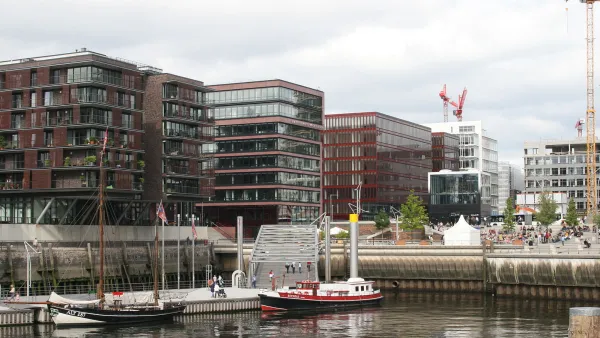In Germany's second largest city, a $14 billion experiment will prove whether planners and designers understand what it takes to breathe life into large scale urban redevelopments.
With 25 million square feet of gross floor area spread over 100 new buildings, nine miles of new promenades, 70 acres of parks and plazas, three subway stations, a university and symphony hall, Hamburg and its private partners are placing a $14 billion bet that they can turn the largest inner city redevelopment underway in Europe into "a living, organic place".
"HafenCity is one of the most ambitious urban redevelopment projects now being built across the world," observes Nate Berg. "Its peers are the largest megaprojects in cities like Seoul, where $28 billion is going toward a Daniel Libeskind-designed waterfront business district, or New York, with its $12 billion Hudson Yards development. The goal is to create an entirely new section of Hamburg’s downtown over the course of 25 years, converting city-owned former warehouse land serving the river port into a neighborhood."
"To create a community from nothing, its developers are employing a complex approach to social engineering that, if it works, could provide a model for other urbanizing areas. If it doesn’t, well, the state of Hamburg could end up losing billions of dollars."
FULL STORY: Germany’s Designer City

National Parks Layoffs Will Cause Communities to Lose Billions
Thousands of essential park workers were laid off this week, just before the busy spring break season.

Retro-silient?: America’s First “Eco-burb,” The Woodlands Turns 50
A master-planned community north of Houston offers lessons on green infrastructure and resilient design, but falls short of its founder’s lofty affordability and walkability goals.

Delivering for America Plan Will Downgrade Mail Service in at Least 49.5 Percent of Zip Codes
Republican and Democrat lawmakers criticize the plan for its disproportionate negative impact on rural communities.

Test News Post 1
This is a summary

Test News Headline 46
Test for the image on the front page.

Balancing Bombs and Butterflies: How the National Guard Protects a Rare Species
The National Guard at Fort Indiantown Gap uses GIS technology and land management strategies to balance military training with conservation efforts, ensuring the survival of the rare eastern regal fritillary butterfly.
Urban Design for Planners 1: Software Tools
This six-course series explores essential urban design concepts using open source software and equips planners with the tools they need to participate fully in the urban design process.
Planning for Universal Design
Learn the tools for implementing Universal Design in planning regulations.
EMC Planning Group, Inc.
Planetizen
Planetizen
Mpact (formerly Rail~Volution)
Great Falls Development Authority, Inc.
HUDs Office of Policy Development and Research
NYU Wagner Graduate School of Public Service




























